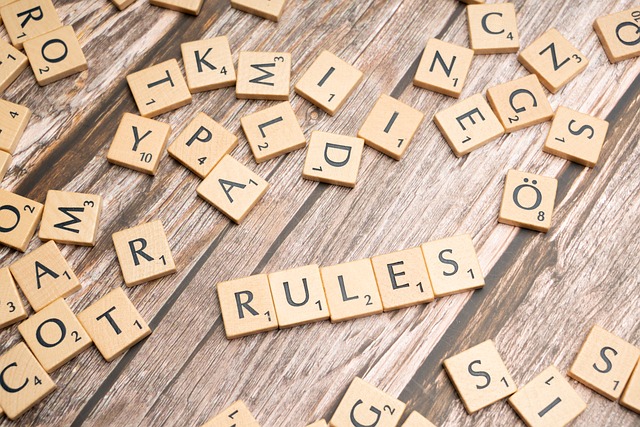
"Your 2025 Budget Is Already Wrong"
03.03.2025 | Linda J. Rosenthal, JD

It was late last year at the 2023 White House Tribal Summit.
Secretary of the Interior Deb Haaland (Laguna Pueblo) happily announced the long-awaited release of a new rule “to improve implementation of” the Native American Graves Protection and Repatriation Act (NAGPRA).
It had, indeed, been an excruciatingly long wait: Congress passed NAGPRA in 1990. President George H.W. Bush immediately signed it into law.
And then … not much happened for over three decades.
In enacting the Native American Graves Protection and Repatriation Act, federal lawmakers at long last had acknowledged that “…that human remains and other cultural items removed from Federal or tribal lands belong, in the first instance, to lineal descendants, Indian Tribes, and Native Hawaiian organizations….”
Through administration by the National Park Service, the purpose of NAGPRA “… is to provide for the protection of Native American graves and the repatriation of Native American remains and cultural patrimony.” See Senate Report 101-473 (1990). Under the statute, museums and federal agencies are required “…to identify Native American human remains, funerary items, and objects of cultural significance in their collections and collaborate with Indian tribes and Native Hawaiian organizations to repatriate them.”
For almost 30 years, though, there was little progress. There were meetings and hearings, of course. There were proposed rules and minor tweaks. But the statutory goal was far from achieved as the General Accountability Office pointed out in a harsh report: After Almost 20 Years, Key Federal Agencies Still Have Not Fully Complied with the Act (July 28, 2010) GAO-10-768.
Early in the current Administration, particularly when Secretary Haaland and Assistant Secretary Bryan Newland (Bay Mills Community) took office in March 2021, the removal “of barriers to repatriation became a priority of the Interior Department.
NAGPRA included “…established protocols for museums and other institutions.” But “those efforts have dragged on for decades.” Tribal representatives criticized the slow pace and the factor of “… institutional resistance.”
Complaints of poor performance being “widespread,” the DOI “set out to draft regulatory guidance.” In “initial consultation with 71 Native Nations in the summer of 2021,” the agency “received more than 700 specific comments on the proposed changes.”
On December 6, 2023, at the White House Tribal Summit, Secretary Deb Haaland unveiled what has been described variously as a “final rule for implementation” of the 1990 Act, or a “final rule to revise regulations that implement” it. See Federal Register, 88 FR 86452: (December 13, 2023), effective date January 12, 2024. See as well: Interior Department Announces Final Rule for Implementation of the Native American Graves Protection and Repatriation Act (December 6, 2023) Press Release, U.S. Department of the Interior, doi.gov.
While “over the years” there had been “small changes to the law,” the new rule is the “first total revision in the law’s three-decade history, according to Melanie O’Brien, manager of the National NAGPRA Program.”
In any event, it is a “...major overhaul to a decades-old law that governs the return of Native American ancestral remains and artifacts to their tribal nations,” explains Jenna Kunze in Federal Government Overhauls NAGPRA to Expedite Return of Native Ancestral Remains (December 7, 2023) Native News Online. She adds: “Nearly three years in the making,” the “final rule … expedites and simplifies the process for tribal nations seeking their relatives’ return.” It “closes a loophole that museums and federally funded institutions have used to retain ancestral remains and burial objects in their collections for years.”
The new Rule is “ … designed to hasten returns” by providing “systematic processes for returning Native American human remains, funerary objects, sacred objects, or objects of cultural patrimony to lineal descendants, Indian Tribes, and Native Hawaiian Organizations (NHOs)….”
There are streamlined requirements for museums and federal agencies “to inventory and identify Native American human remains and cultural items in their collections.” And now there is a “…strict five-year deadline for them to re-inventory and return their collections of Native American human remains and burial objects to their present-day tribal nations.” See website for NAGPRA, National Park Service.
Tribes gain “… more authority … throughout this process.” The “onus of initiating consultation” has shifted “from tribal nations to museums and institutions,” including almost all those that are federally funded. Significantly for this element of change, the new rule “imposes on museums and federal agencies the duty to obtain “… free, prior, and informed consent before any exhibition of, access to, or research on human remains or cultural items.”
“Since 1995,” reports Native News Online’s Jenna Kunze, “…museums [had] reported a collection of more than 208,000 human remains. But in the past 33 years, not even half have been returned. Today, institutions still hold roughly 96,000 human remains, according to the government’s database, in large part because of a loophole in the law.”
The new rule is intended to “fix the barriers to repatriation,” said the NAGPRA program’s Melanie O’Brien. “We’re trying to get back to what Congress intended…that got somehow misunderstood between then and now.”
Immediately after the December announcement, and considering the looming mid-January 2024 effective date, “… museums and institutions holding Native American human remains and artifacts across the country scrambled to understand and implement new changes…”
Of course, this new regulation didn’t suddenly fall out of the sky. “Museum leaders have been preparing for the new regulations for months, consulting lawyers and curators and holding lengthy meetings to discuss what might need to be covered up or removed. Many institutions are planning to hire staff to comply with the new rules, which can involve extensive consultations with tribal representatives.” See Leading Museums Remove Native Displays Amid New Federal Rules (January 26, 2024) Julia Jacobs & Zachary Small, The New York Times.
The result has been a major shift in practices when it comes to Native American exhibitions at some of the country’s leading museums — one that is certainly noticeable to visitors and gaining substantial media coverage.
And speaking of coverage, most of the news stories have focused on that shocking spectacle of popular exhibits draped with large swaths of material or missing entirely. To cover or not to cover … was one of the key dilemmas facing these institutions on the stroke of midnight on January 12th. See, for example: Field Museum Covers Some Native Displays as New Rules Take Effect (January 11, 2024) Julia Jacobs and Zachary Small, The New York Times.
Some of the most prominent museums did not immediately announce “how their exhibits will be affected.” But soon they fell in line. See the NY Times article, above, and Field Museum, Others Cover Native American Displays to Comply with New Regulations (January 23, 2024) Jenna Kunze, Native News Online.
See also Museums cover Native displays after new repatriation rules (January 26, 2024) Samantha Chery, The Washington Post [“The American Museum of Natural History in New York and other museums are ensuring they have consent from Indigenous groups to exhibit items in their collections.”
Initially, the AMNH equivocated on its plans, but a few days after the new rule went into effect, it came around. That move, say observers, was significant in prodding other institutions around the nation to comply.
That’s not to say there aren’t critics and doubters. See, for example, The Vanishing Archive (January 29, 2024) Elizabeth Weiss, city-journal.org.
See also, in the January 26th New York Times article: “As the new regulations have been discussed and debated over the past year or so, some professional organizations, such as the Society for American Archaeology, have expressed concern that the rules were reaching too far into museums’ collection management practices. But since the regulations went into effect on Jan. 12, there has been little public pushback from museums.”
But the reaction from indigenous groups is positive. See, for example: Indigenous Groups Respond After U.S. Museums Cover Native Displays (February 2, 2024) Adam Schrader, news.artnet.com [“After several U.S. museums closed displays of Indigenous objects last week, Native American groups are responding with support of the new regulations added to a federal law that require museums to receive consent to display certain cultural artifacts and human remains.”
See also: What the New Federal Regulations for Native American Ancestors and Sacred Objects Mean for Museums (February 21, 2024) Karen K. Ho, artnews.com. [quoting Interior Assistant Secretary Bryan Newland, himself a former trial leader]: “NAGPRA is an important law that helps us heal from some of the more painful times in our past by empowering Tribes to protect what is sacred to them. These changes to the Department’s NAGPRA regulations are long overdue and will strengthen our ability to enforce the law and help Tribes in the return of ancestors and sacred cultural objects,”
On January 30, 2024, the Native Governance Center, @NativeGov, a nonprofit organization that “seeks to boost the sovereignty of Native American nations,” posted on social media: [“I]n sharp contrast to the ‘incredibly slow’ progress” on NAGPRA since 1990 – the new law this month has “… already created some real short-term changes across the U.S.”
In the possibly-too-much good news department, some tribal officials have reported being concerned that, on account of the welcome, tight deadlines imposed on the cultural institutions for obtaining tribal consent, “… the new rules will result in a deluge of requests … that may be beyond their capacities and could create a financial burden.”
But it’s all good, according to Myra Masiel-Zamora, an archaeologist and curator with the Pechanga Band of Indians: “We’re finally being heard — and it’s not a fight, it’s a conversation … We can say, ‘This needs to come home,’ and I’m hoping there will not be pushback.”
– Linda J. Rosenthal, J.D., FPLG Information & Research Director
